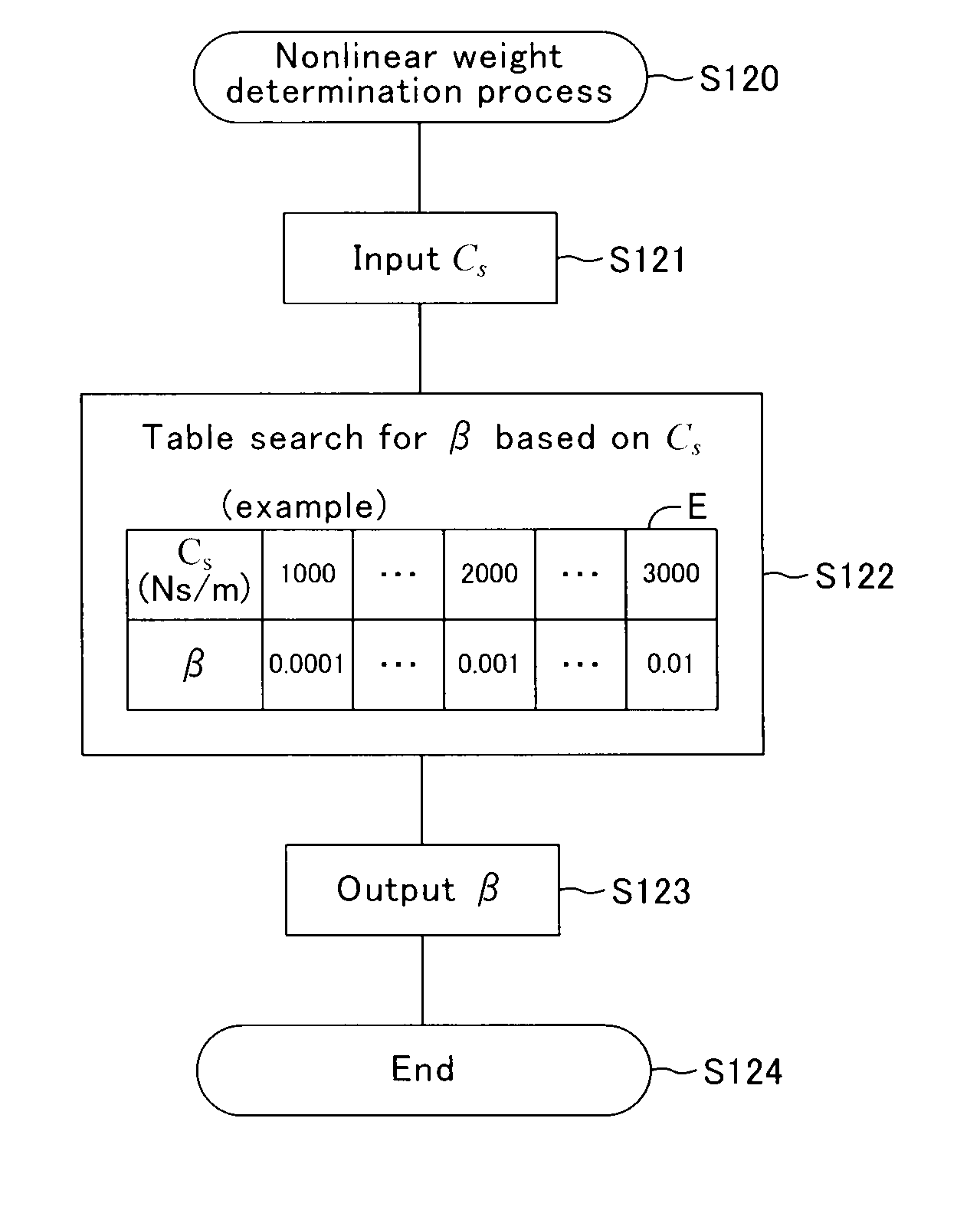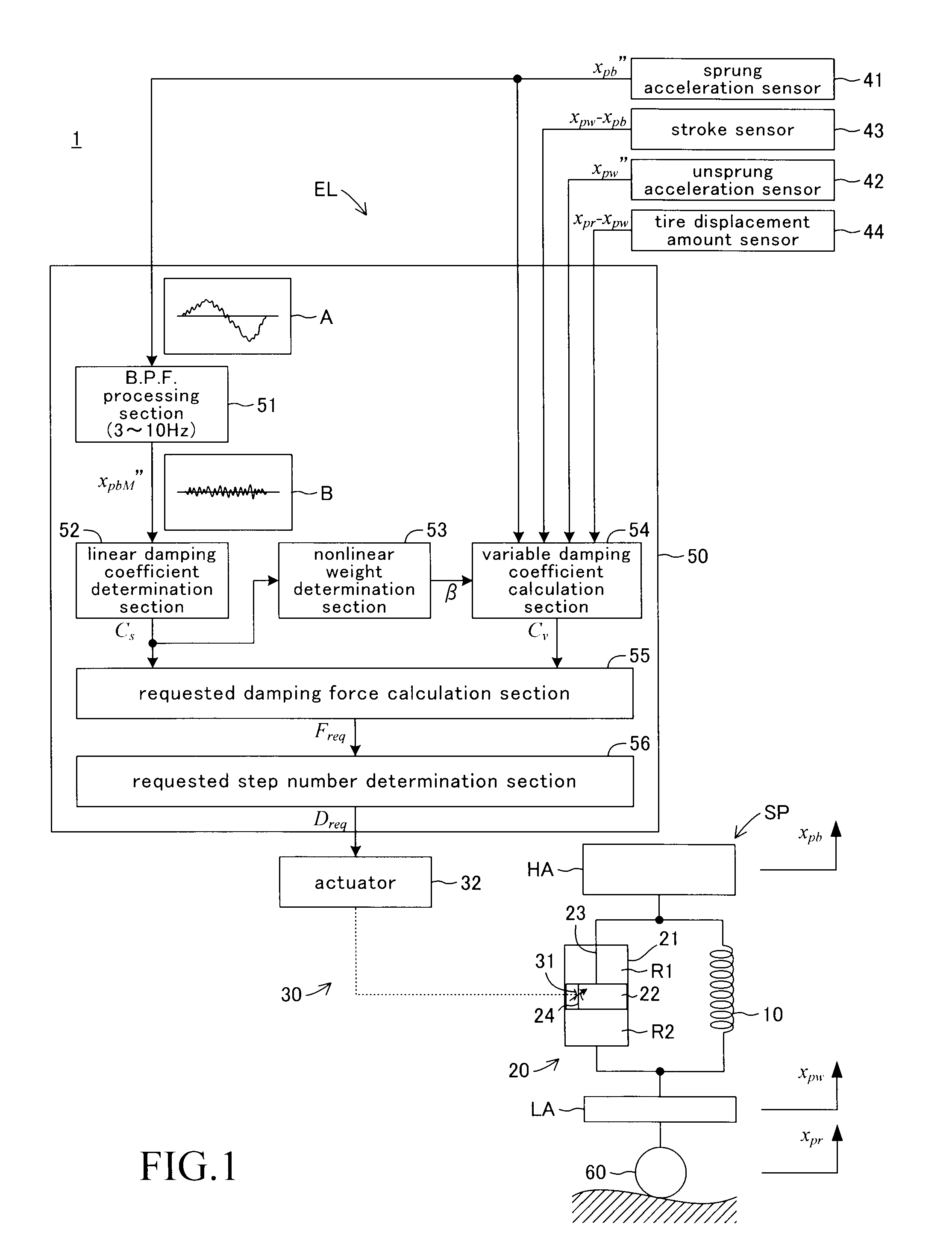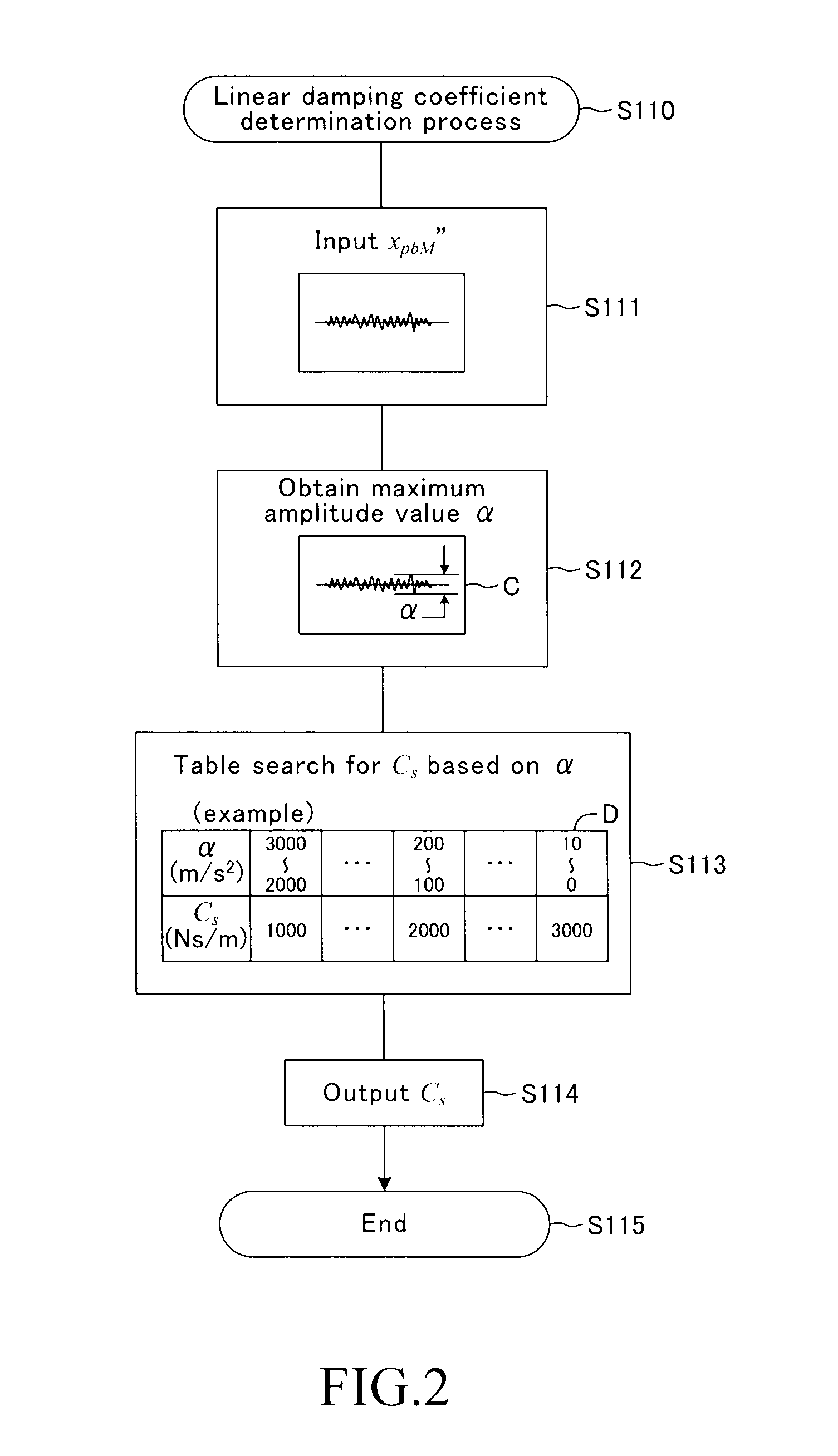Damping force control apparatus
a technology of damping force and control apparatus, which is applied in the direction of bicycle equipment, instruments, transportation and packaging, etc., can solve the problems of difficult control of damping force, degradation of riding quality, and worsening riding quality, so as to improve riding quality, improve riding quality, and suppress degradation of riding quality
- Summary
- Abstract
- Description
- Claims
- Application Information
AI Technical Summary
Benefits of technology
Problems solved by technology
Method used
Image
Examples
first embodiment
[0056]FIG. 1 is a general diagram illustrating an overall vehicle suspension control apparatus according to a first embodiment of the present invention. As shown in FIG. 1, a suspension control apparatus 1 includes a suspension apparatus SP and an electric control apparatus EL.
[0057]Four suspension apparatuses SP are attached to the vehicle, at the left-front, right-front, left-rear, and right-rear thereof, and each suspension apparatus SP includes a spring 10 and a damper 20. The spring 10 and the damper 20 are interposed between a sprung member HA and an unsprung member LA of the vehicle, with one of the ends (the lower end) of the spring 10 and the damper 20 being connected to the unsprung member LA and the other of the ends (the upper end) of the spring 10 and the damper 20 being connected to the sprung member HA. In the present embodiment, the spring 10 is a coil spring. This spring is a vibrating body having a predetermined spring constant. The damper 20 is disposed so as to b...
second embodiment
[0109]In the aforementioned first embodiment, the damping force is controlled so that the Lissajous curve expressing the transition of the requested damping force Freq falls within the range of variation R for the damping force characteristic of the damper 20, by changing the value of the nonlinear weight β in accordance with the magnitude of the linear damping coefficient Cs. However, in the present embodiment, the requested damping force is corrected so that the requested damping force falls within the range of variation for the damping force characteristic of the damper in accordance with changes in the linear damping coefficient Cs.
[0110]FIG. 13 is a general diagram illustrating an overall vehicle suspension control apparatus according to a second embodiment of the present invention. A suspension control apparatus 2 includes a suspension apparatus SP and an electric control apparatus EL. The electric control apparatus EL includes various types of sensors and a microcomputer 150....
third embodiment
[0147]Next, a third embodiment of the present invention will be described. The damping force control apparatus described in the present embodiment simultaneously controls the damping forces generated by the dampers in respective four suspension apparatuses so as to dampen vibrations in control target locations of the sprung member HA caused by heave motion (vertical motion), roll motion, and pitch motion in the sprung member HA, by applying the nonlinear H-infinity control theory to a control system designed based on the motion of four suspension apparatuses attached to the left- and right-front and left- and right-rear of the sprung member HA.
[0148]FIG. 19 is a diagram illustrating a vehicle model (a four-wheel model) in which four suspension apparatuses SPFR, SPFL, SPRR, and SPRL are attached to the sprung member HA at the left- and right-front and left- and right-rear thereof. As shown in the diagram, the suspension apparatus SPFR is attached to the right-front location of the sp...
PUM
 Login to View More
Login to View More Abstract
Description
Claims
Application Information
 Login to View More
Login to View More - R&D
- Intellectual Property
- Life Sciences
- Materials
- Tech Scout
- Unparalleled Data Quality
- Higher Quality Content
- 60% Fewer Hallucinations
Browse by: Latest US Patents, China's latest patents, Technical Efficacy Thesaurus, Application Domain, Technology Topic, Popular Technical Reports.
© 2025 PatSnap. All rights reserved.Legal|Privacy policy|Modern Slavery Act Transparency Statement|Sitemap|About US| Contact US: help@patsnap.com



